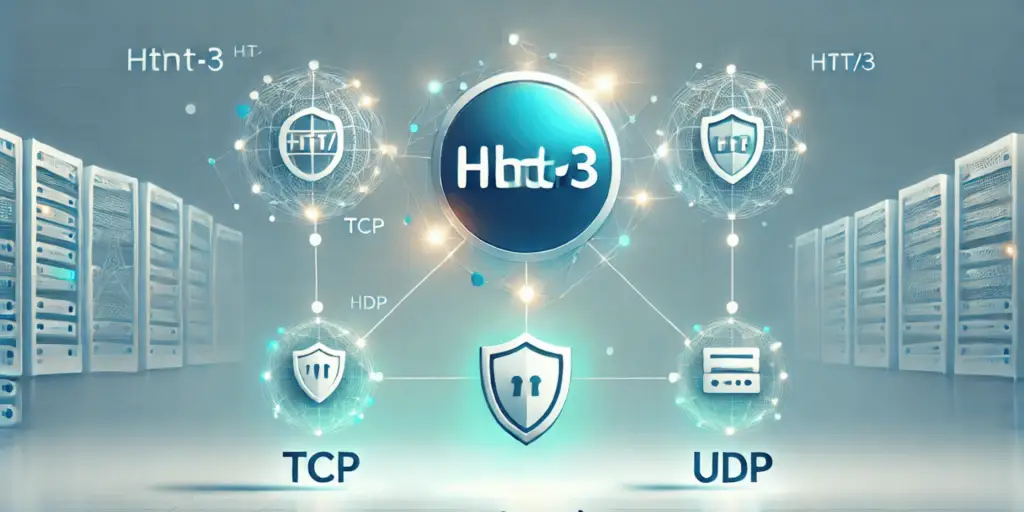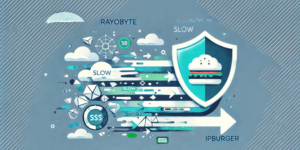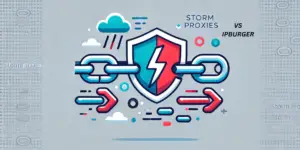Every industry has its doomsday rumors. Remember when Y2K was supposed to end the internet? Well, the proxy world had its own apocalyptic murmurings a few years ago. The supposed villain? HTTP/3 and its UDP-based QUIC protocol.
The claim? Proxies, which overwhelmingly rely on TCP, were destined for the tech graveyard.
But here’s the kicker: It didn’t happen.
Yes, HTTP/3 brings faster speeds, lower latency, and built-in encryption. Sure, it’s a big deal. But does that spell the end for proxies? Absolutely not.
In fact, the numbers don’t lie. As of late 2024, only 33.5% of websites use HTTP/3. The vast majority of web traffic still runs on TCP. Proxies remain indispensable for web scraping, automation, and anonymity—and they’re not going anywhere.
This blog dives deep into HTTP/3, debunks the myths, and shows how IPBurger’s cutting-edge proxies are built to thrive in this evolving digital landscape. Because here’s the truth: innovation doesn’t kill tools—it transforms them. And the proxy industry is already ahead of the curve.
Ready to see how? Let’s go.
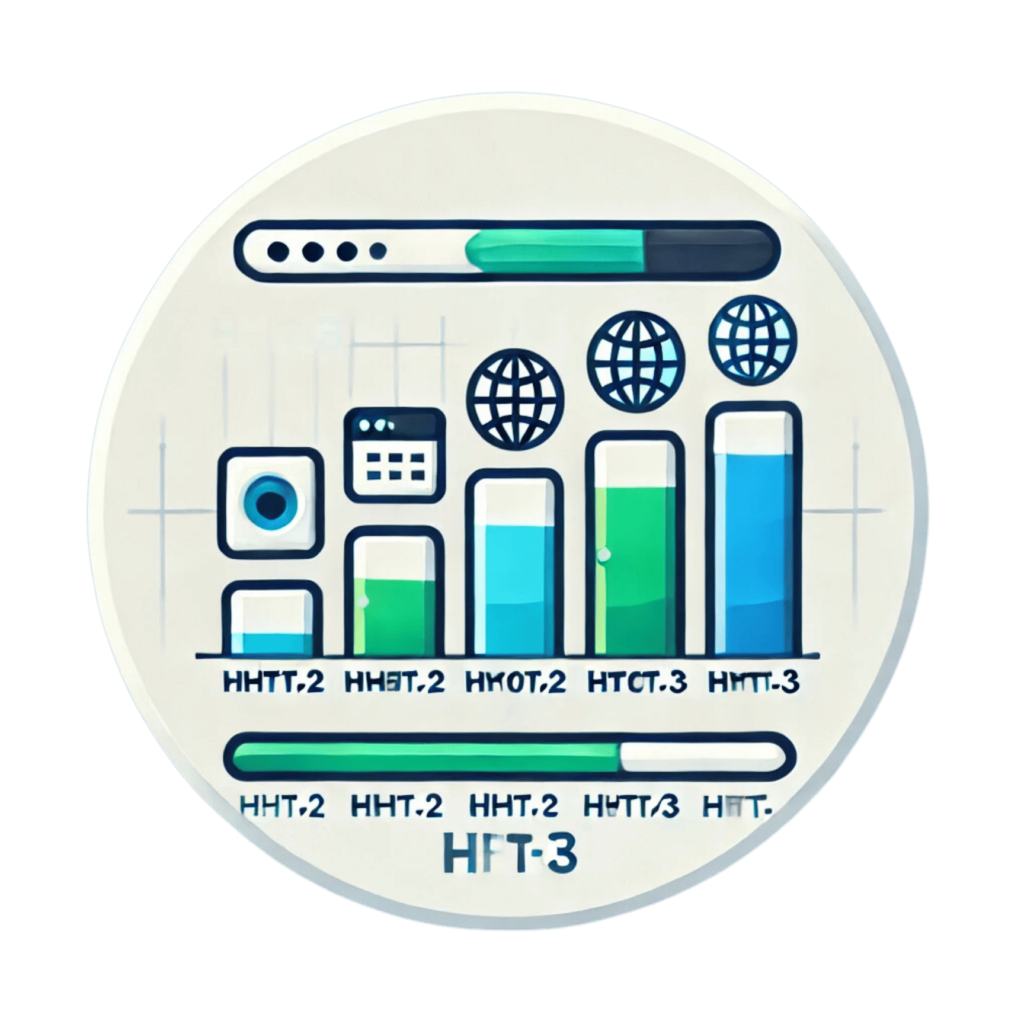
What is HTTP/3, and Why Does It Matter?
If HTTP/3 feels like just another tech upgrade, think again. It’s more than a version bump—it’s a full-on reinvention of how the web moves data. Built on QUIC (Quick UDP Internet Connections), HTTP/3 ditches the TCP backbone that has powered the web for decades.
But what does that actually mean?
The Evolution from HTTP/2 to HTTP/3
HTTP/2 revolutionized web performance back in 2015. It introduced multiplexing—sending multiple requests and responses over a single connection—solving many of HTTP/1.1’s inefficiencies. But it still relied on TCP, which comes with limitations:
- Head-of-Line Blocking: A lost packet halts everything, even if it’s unrelated to the data you need.
- High Latency: TCP’s three-way handshake slows things down before a connection even starts.
Enter HTTP/3. By building on UDP, a faster, connectionless protocol, HTTP/3 sidesteps these issues entirely. With QUIC, each stream of data operates independently, meaning a dropped packet only affects its stream—not the whole connection. Combine that with built-in TLS encryption, and you’ve got a protocol designed for speed, security, and seamless performance.
Why This Matters for Proxies
Here’s where it gets interesting:
- Traditional proxies rely on TCP, the very protocol HTTP/3 is moving away from.
- UDP traffic, like that used by QUIC, operates differently, requiring specialized handling by proxy servers.
To some, this shift from TCP to UDP feels like a seismic threat to proxies. They worry that TCP-based proxies can’t support HTTP/3 traffic, leaving them irrelevant in a QUIC-dominated future.
But here’s the truth: most of the internet isn’t even close to being HTTP/3-first.
Proxies like IPBurger’s solutions are already evolving to handle both TCP and UDP traffic seamlessly. The key isn’t abandoning existing tech but adapting to support what’s next.
So, does HTTP/3 matter? Absolutely. It’s faster, smarter, and better equipped for the modern web. But is it a death knell for proxies? Far from it. With the right infrastructure—like IPBurger’s—you’ll be ready for whatever the web throws your way.
Next, let’s look at a key piece of the puzzle: UDP over SOCKS and why it’s at the heart of this conversation.
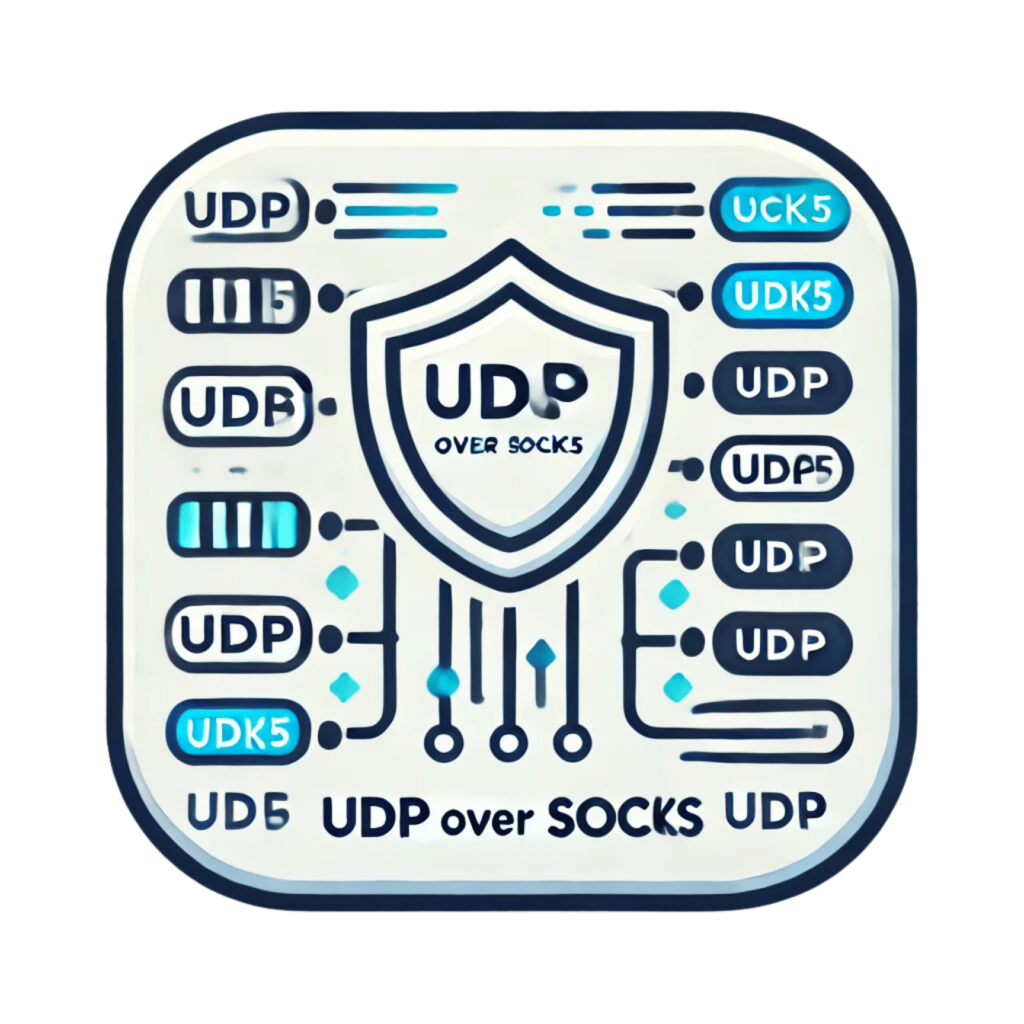
What is UDP over SOCKS?
The Basics of SOCKS
SOCKS (Socket Secure) is a protocol that routes network traffic through a proxy server. Unlike HTTP proxies that handle specific web requests, SOCKS operates at a lower level, forwarding any type of internet traffic—TCP, UDP, and beyond. Think of it as the Swiss Army knife of proxy protocols.
- TCP in SOCKS: Historically, most proxies have focused on TCP traffic because the majority of web activity happens over this protocol.
- UDP in SOCKS: UDP, on the other hand, handles low-latency traffic like gaming, VoIP, DNS queries, and, increasingly, HTTP/3 over QUIC.
UDP over SOCKS enables proxy servers to process UDP traffic seamlessly, allowing for compatibility with modern protocols like HTTP/3 while still supporting traditional TCP traffic.
Why UDP over SOCKS Matters
The move from TCP to UDP in HTTP/3 has raised concerns in the proxy world. Some argue that most proxies aren’t equipped to handle this shift. But that’s a half-truth at best.
- Modern Proxies Can Adapt: High-quality proxies like IPBurger’s rotating residential and mobile proxies are already equipped to handle UDP traffic through SOCKS5.
- Low-Latency Advantage: UDP’s speed advantage for real-time applications—gaming, streaming, and now HTTP/3—makes it a priority for proxy providers aiming to stay relevant.
- Enhanced Compatibility: With the rise of QUIC, UDP over SOCKS ensures that proxies remain versatile enough to handle all types of web traffic.
Debunking the UDP Over SOCKS Myths
- “Most proxies can’t support UDP.”
Wrong. Many modern proxy solutions, like those offered by IPBurger, already support SOCKS5 with UDP, ensuring compatibility with HTTP/3. - “Setting up UDP over SOCKS is impossible on certain systems.”
Not true. Solutions for running UDP over SOCKS exist across platforms, including Windows, Linux, and macOS. Proxy providers like IPBurger integrate these capabilities into user-friendly configurations.
With UDP over SOCKS, proxies don’t just survive—they thrive in a HTTP/3 world. But that’s only part of the story. In the next section, we’ll tackle the biggest fears surrounding HTTP/3 and why they’re wildly exaggerated.
Debunking the Fears Around HTTP/3 and Proxies
Whenever new technology emerges, people love to predict the end of an era. With HTTP/3 and QUIC, some were quick to sound the death knell for proxies. But let’s cut through the noise. Here’s why these fears are blown out of proportion—and why IPBurger’s proxies are built to thrive in this changing landscape.
Fear 1: “HTTP/3 Will Replace TCP with UDP, Rendering Proxies Obsolete”
This claim assumes that proxies, most of which handle TCP traffic, can’t adapt to the shift to UDP-based protocols. But here’s the reality:
- Adoption is Slow: Despite HTTP/3’s benefits, only 33.7% of websites have adopted it as of late 2024. The vast majority of internet traffic still relies on TCP, making this a non-issue for the foreseeable future.
- Modern Proxies are Flexible: Proxies like IPBurger’s SOCKS5 proxies already support UDP traffic, ensuring seamless compatibility with HTTP/3 when needed.
Bottom Line: TCP-based proxies remain highly relevant, and those equipped for UDP are already future-proofed.
Fear 2: “HTTP/3 Will Cause IP Leaks, Exposing Users”
Some believe that QUIC’s UDP foundation increases the risk of IP leaks, especially when using proxies. While IP leaks are always a valid concern, they’re hardly unique to HTTP/3.
- How Proxies Mitigate This: High-quality proxies, like IPBurger’s, are designed with advanced routing protocols and leak prevention mechanisms, ensuring that your real IP address stays hidden.
- Real-World Solutions Exist: Proxy providers have already adapted their systems to account for QUIC’s quirks, effectively managing UDP traffic to maintain user anonymity.
Pro Tip: Always choose reputable proxy providers, like IPBurger, that prioritize data privacy and leak prevention.
Fear 3: “Proxies Can’t Handle the Shift to UDP”
This one assumes that the industry hasn’t already been innovating. Spoiler: It has.
- SOCKS5 with UDP: Many proxies already support SOCKS5, which handles UDP traffic. This makes the transition to QUIC entirely manageable.
- IPBurger’s Approach: With a global proxy pool, rotating IPs, and support for both TCP and UDP traffic, IPBurger proxies are designed to handle both today’s traffic and tomorrow’s.
Fear 4: “HTTP/3 Adoption Will Be Swift and Unstoppable”
Sure, HTTP/3 adoption is growing, but let’s keep things in perspective:
- Browser Limitations: As of late 2024, browsers like Safari (used by 17% of global users) still don’t enable HTTP/3 by default.
- Website Adoption: Even major platforms like Amazon default to HTTP/2 on unsupported browsers. It will take years—if not decades—for HTTP/3 to reach the ubiquity of its predecessors.
Why These Fears Don’t Hold Up
Innovation doesn’t kill industries—it forces them to evolve. Just as proxies adapted to overcome CAPTCHAs and browser fingerprinting, they’re now adapting to HTTP/3. IPBurger’s solutions stand at the forefront of this evolution, offering compatibility with both existing and emerging protocols.
Takeaway: HTTP/3 won’t kill proxies—it will make them stronger. And with the right tools, like IPBurger’s advanced proxy infrastructure, you’ll stay ahead of the curve.
Next, let’s explore the future of proxies in an HTTP/3-driven world and why they remain indispensable.
The Future of Proxies in an HTTP/3 World
HTTP/3 is a technological leap forward, no doubt. Faster, more reliable, and better suited for the modern internet. But let’s not mistake evolution for extinction. Just like past innovations, HTTP/3 challenges the proxy industry to adapt—and history shows proxies are more than up to the task.
1. Proxies Have Faced Big Challenges Before
Let’s rewind. Proxies have repeatedly overcome hurdles that seemed insurmountable at the time:
- CAPTCHA: Anti-bot technology designed to detect and stop automated traffic. Proxies didn’t vanish—they integrated solutions like CAPTCHA solvers.
- Browser Fingerprinting: Designed to identify users through unique browser configurations. The response? Proxies teamed up with anti-detect browsers to spoof or suppress fingerprints.
HTTP/3 and QUIC are just the latest challenges in this ongoing cycle of innovation. And as before, proxies are already evolving to meet the moment.
2. Adoption Will Be Gradual, Not Instant
The hype around HTTP/3 assumes rapid adoption, but the reality is more complex:
- Infrastructure Takes Time: Many organizations still run older systems that are optimized for HTTP/1.1 or HTTP/2. Transitioning to HTTP/3 requires costly infrastructure upgrades, meaning TCP will remain dominant for years.
- User-Driven Demand: Platforms like Amazon and Netflix will prioritize compatibility with the widest range of users—many of whom still rely on HTTP/2-capable browsers.
Stat Spotlight: Even by late 2024, 64.5% of websites still haven’t adopted HTTP/3. The world isn’t ditching TCP anytime soon.
3. The Role of Innovation in Proxy Technology
Forward-thinking proxy providers like IPBurger are already preparing for the future:
- Dynamic Protocol Support: IPBurger proxies handle both TCP and UDP traffic, ensuring seamless operation regardless of protocol.
- Rotating Proxies for Anonymity: Whether for HTTP/2 or HTTP/3, IPBurger’s rotating residential and mobile proxies provide unmatched privacy and flexibility.
- Future-Ready Solutions: Emerging standards like MASQUE and CONNECT-UDP are paving the way for proxies to work seamlessly with QUIC—and IPBurger is leading the charge.
4. Proxies Will Remain Indispensable
Even in an HTTP/3 world, proxies serve critical use cases that won’t change:
- Web Scraping and Automation: These rely on proxies to bypass geo-restrictions, gather data, and maintain anonymity.
- Content Delivery and Testing: Proxies are essential for testing websites and applications across regions.
- Anonymity and Security: Proxies will continue to shield users’ identities and secure sensitive activities, regardless of transport protocol.
The Bottom Line
HTTP/3 isn’t a death sentence for proxies—it’s a challenge. And as history shows, challenges drive innovation. With IPBurger’s cutting-edge solutions, you’re not just surviving the transition to HTTP/3—you’re thriving in it.
In the next section, we’ll wrap up everything you need to know about how proxies are evolving and why they remain critical in today’s and tomorrow’s web.
Adapting Proxies to the Future of HTTP/3
The arrival of HTTP/3 marks an exciting chapter in the evolution of internet protocols. Faster, more reliable, and inherently encrypted, it’s poised to change the way data flows online. But for proxies, this isn’t the end—it’s an opportunity.
Here’s the reality:
- Adoption is Gradual: With only 33.5% of websites using HTTP/3 as of 2024, the majority of web traffic still runs on TCP.
- Proxies Are Adapting: High-quality providers like IPBurger are already equipped to handle both TCP and UDP traffic seamlessly, ensuring compatibility with today’s and tomorrow’s protocols.
- Demand Isn’t Going Anywhere: From web scraping to anonymity, the core use cases for proxies remain as vital as ever.
History has shown that proxies thrive on innovation. When faced with challenges like CAPTCHA and browser fingerprinting, the industry responded with groundbreaking solutions. The shift to HTTP/3 and QUIC is no different.
Why IPBurger Is the Solution
With a global pool of rotating residential and mobile proxies, IPBurger leads the way in future-proof proxy solutions. By supporting both traditional TCP traffic and emerging UDP requirements, IPBurger ensures you stay ahead in a rapidly changing web landscape.
Ready to thrive in an HTTP/3 world? Explore IPBurger’s premium proxy solutions today and future-proof your operations.
Because the web never stops evolving—and neither should you.
FAQs
1. What is HTTP/3, and why is it significant?
HTTP/3 is the latest version of the HTTP protocol, built on QUIC, a UDP-based transport layer. It improves web performance by reducing latency, eliminating head-of-line blocking, and integrating TLS encryption by default. While it’s a game-changer for speed and security, its adoption remains gradual, leaving TCP-based proxies still highly relevant.
2. Will HTTP/3 make traditional TCP-based proxies obsolete?
No, HTTP/3 adoption is still limited, with 64.5% of websites not using it as of late 2024 (W3Techs). Additionally, modern proxies like IPBurger’s are designed to handle both TCP and UDP traffic, ensuring they work seamlessly with HTTP/3 while maintaining support for legacy protocols. Proxies remain indispensable for web scraping, automation, and anonymity.
3. How are proxies adapting to HTTP/3 and QUIC?
Proxies are evolving to support QUIC-based UDP traffic through protocols like SOCKS5, which enables compatibility with HTTP/3. Providers like IPBurger are integrating future-ready solutions such as dynamic protocol support and rotating IPs to maintain privacy and efficiency in HTTP/3 environments. This ensures proxies remain versatile and reliable in an evolving web landscape.
